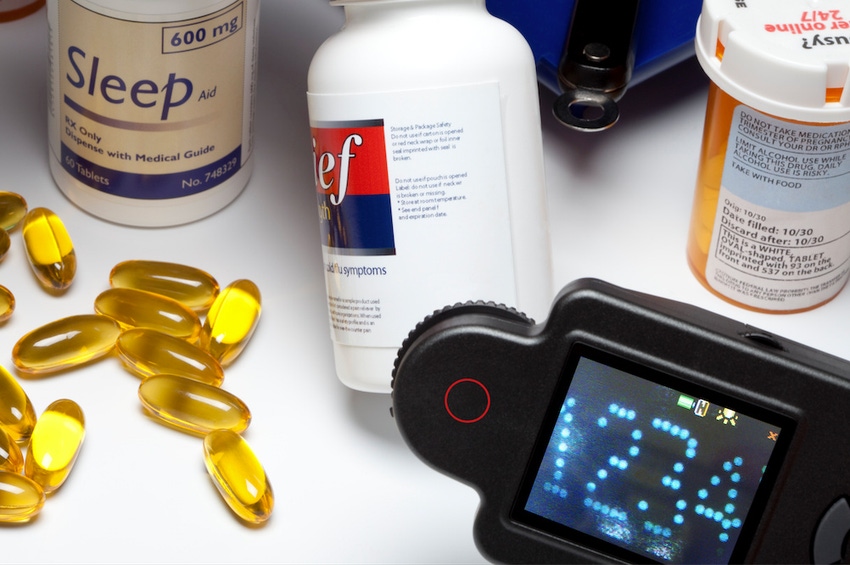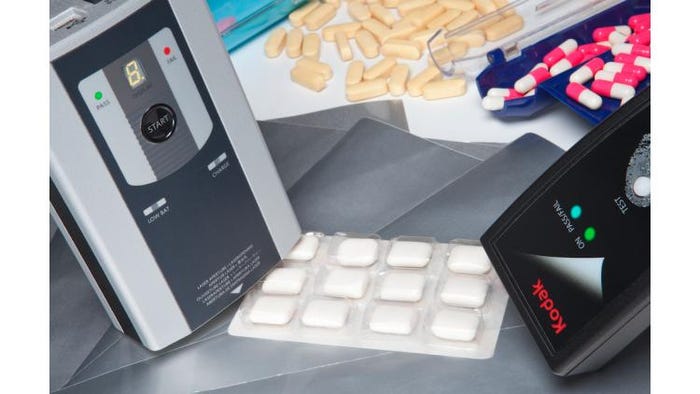November 16, 2015

The cat-and-mouse game for pharmaceutical brands to stay a step ahead of criminals counterfeiting their drugs is an evolving, ongoing process. Every pharma brand is a unique entity and each one needs to have a robust brand protection program, according to a former FBI special agent who now works in pharmaceutical brand protection services.
Keith Cutri, director of business development at Kodak Brand Protection Solutions, works as a global security and investigations consultant and says even a little bit of attention toward end-to-end brand protection is better than inaction. He offers up an approach outlined by Kodak.
In global commerce, he says that typically 5 to 7% of pharma products sold are affected by counterfeiting, which amounts to approximately $1.5 to $1.7 trillion. Those figures could be much larger depending on certain brands’ demographics, geographies of sales, and the type of drug, he adds.
Part of Cutri’s role within Kodak is developing specialized inks and technologies. His division at Kodak offers a unique, affordable way to track products through a distribution system or to be able to tell a genuine product from a counterfeit one, safely and securely. Some inks are “ultra-covert,” making them so secure that even forensics labs are not able to detect them with sophisticated analysis. He says pharma counterfeiting has become increasingly appealing to criminals due to lucrative sales with almost no barriers to entry.
Cutri says United States counterfeiting incidents are “very low” at less than 1%. However, in parts of Africa, there’s a 50 to 60% chance a consumer is receiving a counterfeit drug.
“If a pharma company does nothing to mitigate risk, it is conceivable counterfeiters will pursue the slippery slope of being able to go replicate the API, the product, or even steal the formulation from overseas factories,” Cutri tells PMP News. “If that goes unmitigated, that problem will continue to rise for that brand because there is no incentive for counterfeiters to move on to another brand that ‘has an easier go at the product,’” he says.

Easy to dupe products or alter serial numbers
New systems and technologies make it easier for criminals to duplicate a company’s product or alter serial numbers, Cutri says.
Affordable digital scanning and printing technologies lower the barrier to entry for counterfeiters, making label replication a simple and inexpensive process, he says. GS1 compliant codes have a known sequencing, and counterfeiters may accurately guess at which serialized marks to print on knock-off packaging and labels. Cutri says packaging designs geared up for third-party factories make for a more streamlined approach to making counterfeit cartons, boxes, and pill containers. Portable Mass Spectroscopy systems allow for analysis of drug formulations using small samples for testing. Infra-Red pens and UV lights provide quick and inexpensive ways to analyze pharma brands’ labeling and packaging, allowing counterfeiters to reproduce these security features with IR upconverter and UV inks, readily available on Alibaba and other online channels.
“And these are just the obvious tools and techniques available today,” Cutri adds.
What Cutri always finds interesting is for the role of pharma industry e-pedigree mandates over the next five years. Government regulations in various countries require track-and-trace solutions on packaging. These solutions mandate brands to allow for end-to-end tracking of product, from manufacturer to distributor to health clinic or pharmacy, and ultimately to patient. However, Cutri points out that there is nothing mandated for companies to have authentication capabilities to ensure the product is genuine.
Pharma taking another look at serialization
“So there was a lot of attention to this serialization industry,” he says. “What we’re seeing now is that some of these mandates have not necessarily come through from what we thought we would see, and now the pendulum has swung back. Pharma companies are very concerned about counterfeiting and are now just starting to look at authentication solutions again.”
There are many companies providing a variety of types of authentication solutions in the brand protection field. Cutri says those solutions can range from providing hidden images, IR or UV taggants, and track-and-trace serialization. Additionally, the solutions can incorporate the standard smart phone camera for scanning QR or 2D Matrix codes on medicine bottles. Some covert solutions offer holographic capabilities that provide “semi covert and overt” solutions for authentication.
“And then all the way to other more interesting technologies for covert and ultra-covert capabilities,” Cutri says. “In the covert marking space, which is where Kodak has gained traction, we provide a forensically undetectable solution.”
The Kodak Brand Protection Solutions include the Traceless system, a family of products that can be used as one phase of a comprehensive end-to-end authentication and the tracking system, to incorporate unique, serialized, and invisible marks onto packaging or products that can be authenticated.
“It really runs the gamut,” Cutri says. “There’s variety of solutions for pharma brand owners. Some have been around for a long time and counterfeiters know about them, and then there’s newer, robust technology the changes the scope of brand protection.”

Rapid identification
Kodak’s advanced ultra-covert marking system is the result of investment in this leading technology that was developed over many years. Cutri says that if you’re a brand and want to deploy Kodak’s authentication technology, you want to be able to identify real and fake product quickly in the field, and ensure that the counterfeiters cannot detect your authentication markers.
With a combined serialization tracking solution, distributors, as well as healthcare facilities, pharmacies, and patients can be incentivized – through marketing efforts – to scan the product as part of channel incentive or loyalty program, such as a discounts on future purchases or points accumulated.
“You’re putting marks on paper,” he says. “It’s an overt marker with something as simple as a QR code. Doing that, you’re getting basic information, such as GPS location and potentially getting the identity of who’s scanning depending on what’s opened in the app, and understanding whether that product is being scanned in the correct geography.”
“It’s an overt marker with something as simple as a QR code,” he says. “By scanning this code, you’re getting a lot of information, such as GPS location, serial number, and potentially the identity of who’s scanning depending on what’s opened in the app. In addition, brands can receive information on whether the code is bogus, replicated, or unauthorized, as well as whether the product is being scanned in the correct distribution geography, all of which provides valuable information to initiate anti-counterfeiting and anti-diversion investigations.”
Kodak has developed some technology in this space that allows interaction with layered authentication capabilities embedded in the packaging and labeling itself, Cutri says.
“We can embed ultra-covert invisible markings into codes that can be revealed with specialized handheld readers from Kodak,” he says. “Counterfeiters can knock off standard overt codes, that’s true, but if the codes contain invisible markers, they cannot reproduce the marker system you have within the overt code. Printing overt QR or 2D Matrix codes with Kodak Traceless inks or dyes is the best global insurance policy that you can have in your Brand Protection Program.”
In addition to the marking and tracking solutions, Kodak also provides a five-point consultative approach in its brand protection methodology, to include assess, design, protect, monitor, and enforce. Within this approach, Kodak offers four services to brand protection clients: Assessment and Advisory Services, Forensic Product Analysis Services, Prototype Development Services, and Implementation Services. Within the Forensic Product Analysis Service, Kodak Scientists can examine and validate the integrity of security features and markers for a product or package, and report back with a risk assessment, determining whether counterfeiters will likely uncover the brand protection features and have the ability to copy them
For more company information, visit the Kodak Brand Protection Solutions website or contact Cutri at [email protected]
About the Author(s)
You May Also Like


